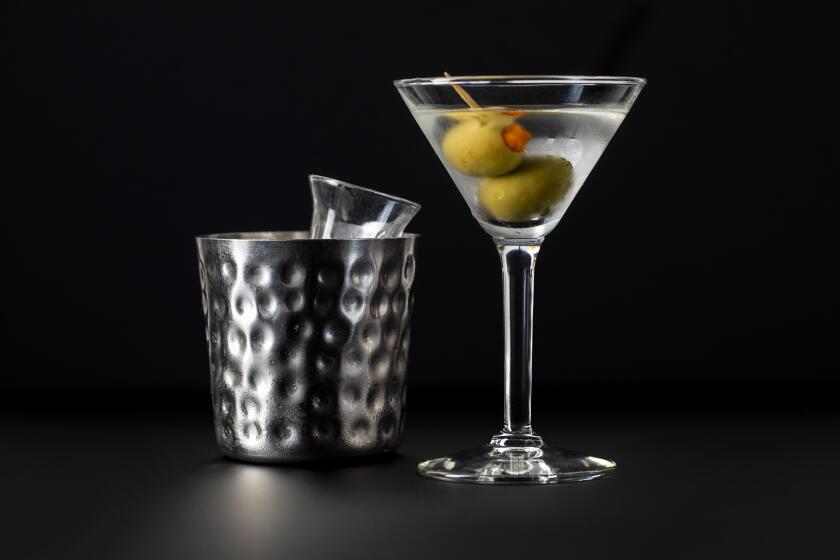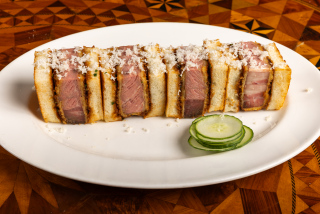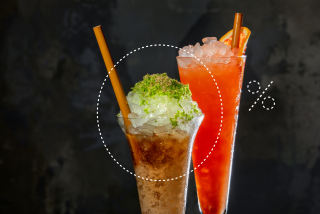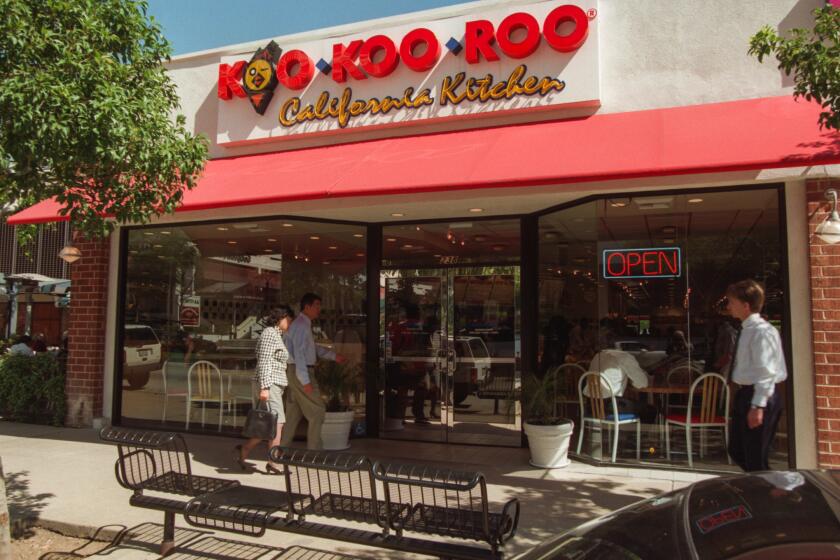A martini, please — and hold the judgment
For years martini-shaming has not only been accepted; it’s been a sort of bloodsport among the cocktail cognoscenti. James Bond is a fool for ordering his martinis shaken. Vodka drinkers can excuse themselves from the bar, thank you very much. The correct ratio of gin to vermouth is 4 to 1 — no, it’s 5 to 1 — no, it’s 50-50 — no, the glass should be misted with vermouth from an atomizer before the gin is poured in.
“When it comes to the martini, everyone thinks they’ve got the straight dope,” writes Robert Simonson, author of the new book “The Martini Cocktail.” “Everyone is wrong about the martini, because everyone is right about the martini, and everyone can’t be right. Get it?”
Yet a core tenet of the craft cocktail revival of the last 15 years or so is that there is a right way to make cocktails (informed by history, grounded in technique) and a wrong way (whatever we were doing in the 1980s and ‘90s).
There are as many places in Los Angeles to drink a martini as there are ways to prepare one.
On martinis, cocktail gatekeepers of the last decade — writers, consultants, craft bartenders and the like — have been united: There is one “correct” martini, and it is made with gin, a good measure of dry vermouth, an optional dash of orange bitters and a lemon twist. You can futz with the ratio of gin to vermouth if you’d like, but stray too far from that formula and you are mixing up an affront to history.
Martini fundamentalists will be aghast, then, when they walk into one of L.A.’s best and most serious destinations for craft cocktails, Koreatown’s Normandie Club, and find an entire section of the menu dedicated to martinis — plural!
The first of the six on offer, the “classic,” is the spec we’ve come to expect, made with Beefeater Gin, Dolin dry vermouth and a lemon twist or an olive for garnish. From there, things get wild: a house martini with Sobieski vodka, fino sherry, white honey and sel gris. An appletini, that cursed relic of “Swingers”-era Americana, reinvented with Rhine Hall and Clear Creek apple brandies, French eau de vie, sour apple cordial and fresh lime.
Strange times, it would seem. Or could it be that the craft cocktail movement, famous for its exclusivity (bars literally hiding their entrances from the public) and doctrinaire approach (house rules like “No hooting, hollering, shouting or other loud behavior”), is loosening up a bit? Perhaps the Normandie Club’s martini menu — vodka-tinis and all — is a beacon of change, a sign of the new, golden martini age we’re living in.
First, there’s the fact that vodka, bête noire of the early craft cocktail revival, is back. In bars of a certain persuasion in the 2000s and early 2010s, ordering a vodka martini was not only uncool, it was impossible. They flat-out refused to serve the spirit.
The New York speakeasy Death & Co., which opens its first Los Angeles location this year, was early and influential in the craft cocktail scene, and notably dogmatic.
“We did not shy away from serving martinis,” says David Kaplan, the bar’s founder and co-owner, “because it was another soapbox we could stand on top of. ‘Let me tell you why the gin martini is the best martini — the ONLY martini!’”
But that “soapboxy” attitude — keeping vodka off the menu, implicitly shaming anyone who tried to order it — “seems insane now,” Kaplan laughs. “That’s so inhospitable!”
Everyone is wrong about the martini, because everyone is right about the martini, and everyone can’t be right. Get it?
— Robert Simonson, author of “The Martini Cocktail”
“Now, among the ‘Illuminati’ of the cocktail world, there’s an absolute respect for people’s preferences,” says Alex Day, who worked behind the bar at Death & Co. in its early days and is now a partner. “On a personal level, there are times when I want a bone-dry vodka martini. Because I’ve had a hard day and I want a big glass of booze, and I want it cold as hell.” (Disclosure: In my former role as editor at Ten Speed Press, I worked on books by Simonson, Kaplan and Day.)
Welcoming back vodka drinkers instead of making them feel “chucked to the airport bar,” to use Kaplan’s phrase, is just one of the promises of the new martini golden age. Another is that today, we can celebrate the martini in all of its historical iterations, rather than obsessing over a single, pre-Prohibition version. At the Broken Shaker, the rooftop bar of downtown’s Freehand Hotel, bar director Christine Wiseman often offers the “Trash-tini,” a cheeky play on a dirty martini with gin, vodka, charred onion-infused dry vermouth, celery shrub, sherry vinegar, an onion and an olive, served on the rocks.
It sounds like martini apostasy but there’s historical precedent, Simonson says. “I had been doing some research and I knew the ‘martini on the rocks’ was a thing — my father used to drink them, and they were very popular in the 1950s and 1960s.”
When he saw the “Trash-tini,” he couldn’t resist ordering it: “It was all over the map, and I was just thinking, ‘How could this possibly work? This has got to be terrible.’” But he was stunned. “It was delightful. It was really original. And yet at the same time, I felt like I was having a martini.”
Trash-tini
Adapted from Christine Wiseman, Broken Shaker, Los Angeles
Ingredients
- ¾ ounce Plymouth gin
- ¾ ounce Grey Goose vodka
- ¾ ounce Luxardo bitter bianco
- ¾ ounce Noilly Prat dry vermouth
- 2 dashes Bittermens Orchard Street celery shrub
- 2 dashes sherry vinegar
- Cocktail onion and olive
Instructions
Combine the liquid ingredients in a mixing glass filled with ice and stir until chilled, about 30 seconds. Strain into a rocks glass filled with a few large ice cubes. Garnish with a cocktail onion and olive on a toothpick.
My Martini
Adapted from “The Martini Cocktail” by Robert Simsonson
Ingredients
- 2¼ ounces Blue gin
- ¾ ounce Dolin dry vermouth
- 1 dash orange bitters
- Lemon twist
Instructions
Combine all of the liquid ingredients in a mixing glass filled with ice and stir until very cold, about 30 seconds. Strain into a chilled cocktail glass. Express the lemon twist over the surface of the drink and drop it into the glass.
More to Read
Eat your way across L.A.
Get our weekly Tasting Notes newsletter for reviews, news and more.
You may occasionally receive promotional content from the Los Angeles Times.











